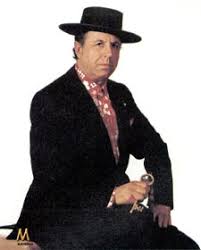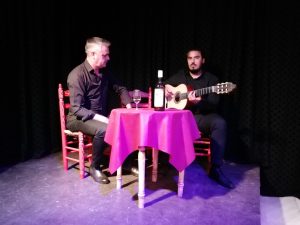The best way to understand the best Flamenco is through the knowledge of the artists who can guide us to discover the guidelines by which to introduce ourselves to the knowledge of singing. In this case, from Pura Esencia Flamenco in the neighborhood of Triana in Seville and with Juan Toro to the cante and Samuel Gutiérrez on guitar, they grant us some guidelines to open ourselves to one of the major songs of flamenco that is La Soleá and by the Apolá style.
We leave you this video, very improvised but full of charm, that we transcribe below so that you do not lose the references:
Juan Toro: Hello, and welcome back to Pura Esencia and flamenco times that we share in honor of you, this authentic and so beautiful art and, so from here, Andalusia.
Today we are going to talk a little bit about the Soleá and I have here our Guitar Master, Samuel Gutierrez, who is apart from an excellent person, a good guitarist and, I would like us to talk a little bit about the Soleá : what can you tell us?
Samuel Gutierrez: la soleá is a kind of song of the purest branch of flamenco, from the root, from which come many styles and many sticks. Geographically , it comes mainly from the provinces of Cadiz and tSeville and also from Cordoba: the Soleá de Córdoba. In Cadiz, you can talk about Pepa de Benito, or the Twin with a very demarcated touch with a very specific style and the Macho that has that is beautiful.
We can also talk about Paquirri, and more by the style of the Soleá by Bulerías, where we are talking about style and the area of Jerez that, well, that has one of the greats like “La Serneta” that was born in Jerez but who also contribute with “cantes de Utrera and Triana”, and therefore there is also a very interesting communication , between Triana, Cadiz and Jerez, Lebrija and Utrera which is the most basic and most important thing of the Soleá.
J.t.:… Utrera also
S.G.: Utrera and Lebrija who are halfway and make that wonderful bridge of the Soleá
J.T.: and we mention Triana… How wonderful, “the soleá alfarera” (alfarera means pottery works)
Paco Taranto
S.G.: Del Zurraque, the Soleá del Zurraque.
J.T.: We could also talk about another type of soleá, for example La Bambera that is also played by Soleá
S.g.:… swing songs that are also called!
J.T.: It can also be said that although it is not a soleá itself, that it is a different “palo”, the rod and the pole also go there to the beat per soleá.
S.G.: The amalgam, the rhythm by almalgam….
J.T.: Samuel, could we say that even if it is a different stick, the pole and the reed belong also to the family of the Soleá?
S.g. They are nourished, because in the amalgam, the twenty times are respected in the Pole and the Reed, therefore if they have a melody that even if they are not the same, if there is a communication between the sticks, defining in itself how the Soleá will be.
J.T.: To this we could also add the bamboo, … that’s what the Soleá has, that one thing we’re just talking about the whole tree
Very nice!. And we could talk about this about the Soleá apolá, since we are talking about the Pole and the Cane, which as I understand and so is said, so that flamenco there is a lot of history,…. but there’s no written history
S.G:Oral transmission!
J.T. : exactly… We could talk about the Soleá apolá which seems to be the invention of a certain “Charamusco”; if that man existed, what do you think?
S.G.: Antonio de Mairena, was a great compiler. He took a lot of songs and distributed them and ranked them. But he was also a great creator: there is a legend that Antonio Mairena created many things even though he later awarded them to other singers or others that others passed them on him. But, perhaps, the one who enhanced them was really Antonio Mairena
J.T.; Do we want to sing around, by the Soleá de Charamusco, the Soleá apolá?…
“I climbed a high mountain
and looking for firewood.
Since I couldn’t find her,
to the valley I went down again…
I climbed a high mountain.
and looking for firewood.
Charamusco, Charamusco!
We changed our hats,
where it was broken, we changed them back
Your hat was broken.
my hat was new””

Blog elaborado literalmente de la transcripción de Juan Toro y Samuel Gutierrez
por Fernando Toro
Blog patrocinado por








